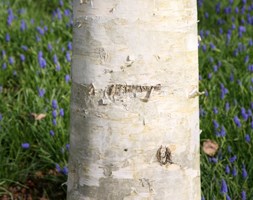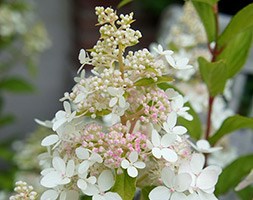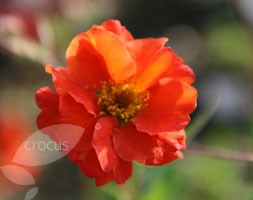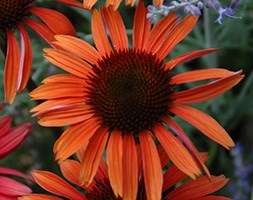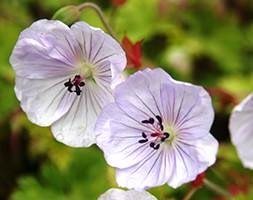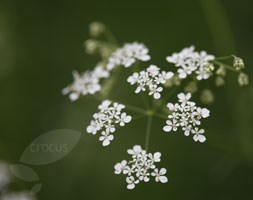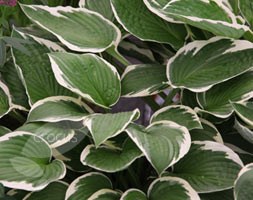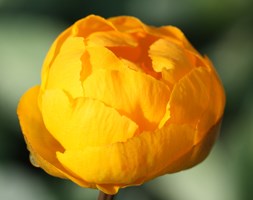New products at Crocus
by Sarah - December 19th, 2015.Filed under: Crocus, New Products.
Crocus just added these new products
Betula utilis var. jacquemontii (west Himalayan birch) £19.99
Position: full sun or lightly dappled shade Soil: moderately fertile, well-drained soil Rate of growth: fast-growing Flowering period: March Flower colour: yellowy-brown male catkins Other features: smooth, bright white bark is very attractive in winter Hardiness: fully hardy Attractive bright white bark, dark green leaves, which turn yellow in autumn, and yellowy brown catkins in spring. An elegant tree that is perfect for all gardens, large or small. It can be grown as a specimen in the lawn, grown in a group in a woodland or just planted as a feature in the garden border. gardens. These trees are sought after for their white bark, the colour of which develops fully when the tree is around 8 years old. Garden care: Requires minimal pruning. Remove any broken, diseased or crossing branches in late autumn or winter. When planting incorporate lots of well-rotted garden compost in the planting and stake well.
Hydrangea paniculata Confetti = ‘Vlasveld02’ (PBR) (hydrangea) £9.99
Position: full sun or partial shade Soil: moist, well-drained, moderately fertile, humus-rich soil Rate of growth: average Flowering period: July to September Hardiness: fully hardy One of the new breed of hydrangeas, this one stood out from the crowd because of its compact habit and its light and airy flowerheads, which also have a delicate scent. Appearing over a long period from early summer, they top sturdy upright stems, and open from green buds. Initially white, each flower takes on pink tones as they mature, so the heads are often a pretty blend of colour. They are great plants for pots and can cope with shadier of the garden, although they will produce more flowers when grown in a sunnier spot. Garden care: Hydrangeas do not like to dry out. In dry weather, soak the roots with a hose and the plant will usually recover. Remove faded flowerheads in spring after the danger of frosts, cutting back the flowered stems to a strong pair of buds. Take out misplaced or diseased shoots. Mulch young plants with a well-rotted manure or compost in spring. Once established, remove a quarter to a third of the shoots to the base of the plant.
Geum ‘Fire Opal’ (avens) £8.99
Position: full sun Soil: humus-rich, moist soil Rate of growth: average Flowering period: June to July Flower colour: coral-orange Other features: rosettes of scalloped, fresh green leaves Hardiness: fully hardy Big, semi-double, cup shaped flowers that have rich coral-orange petals surrounding prominent dark stamens, appear in mid to late summer. This plant has been given the Award of Garden Merit for its ease of growth a great overall performance, so it is definitely worth including in a mixed border. Native to damp meadows and streamsides, it is happiest in a moist soil. Garden care: Lift and divide large clumps every year in early spring or late autumn.
Echinacea ‘Sundown’ (PBR) (Big Sky Series) (coneflower) £7.99
Position: full sun Soil: most soils, except very dry or boggy Rate of growth: average Flowering period: June to August Hardiness: fully hardy Brilliant orange, daisy like flowers with reflexed petals that flare out from prominent, reddish-brown centres appear from June to August. The flowers are held on erect stems with broad, basal leaves. This is a tough, vigorous (though not invasive) plant that does not need staking and also makes an excellent cut flower. If deadheaded regularly, it will flower profusely for up to three months and it copes well with adverse weather conditions, except drought. Try it dotted through a sunny, mixed border, in bold drifts among ornamental grasses or as part of a ‘hot’ colour scheme. It is attractive to bees and butterflies, and birds will flock to the seedheads. Garden care: Deadhead regularly to prolong flowering. Lift and divide congested colonies in autumn or spring. In autumn cut back all dead flower stems to the ground. Coneflowers benefit from a spring or autumn mulch with well-rotted compost.
Geranium ‘Lilac Ice’ (cranesbill) £6.99
Position: full sun or partial shade Soil: fertile, well-drained soil Rate of growth: fast-growing Flowering period: June to October Hardiness: fully hardy A sport of the ever-popular ‘Rozanne’, this new geranium is bound to be popular. Its flowers are a soft lilac-pink, while the foliage they rise above, is subtly mottled yellowish green. Less vigorous, but no less hardy than its parent, this one is better for lining the edges of a path, or being at the front of the border as it won’t stray too far. Garden care: In midsummer rejuvenate plants that are beginning to look jaded, by removing old flowered stems and leaves. Lift and divide large colonies in spring.
Phlox divaricata ‘Blue Perfume’ (perennial phlox) £6.99
Position: partial shade Soil: humus-rich, fertile, moist, well-drained soil Rate of growth: average Flowering period: May to June Flower colour: lilac-blue Other features: hairy, bright green leaves Hardiness: fully hardy Fragrant, lilac-blue flowers in May and June and hairy, bright green leaves. An attractive spreading, semi-evergreen plant that is ideal for planting along the edge of the border or by a well-used path where the perfumed blooms can be appreciated. Add lots of leaf-mould or composted pine needles to the soil when planting, since it prefers a humus-rich soil. Garden care: Add lots of leaf-mould or composted pine needles to the soil when planting. Lift and divide large clumps in autumn or spring
Anthriscus sylvestris (cow parsley) £6.99
Position: full sun or partial shade Soil: well-drained soil Rate of growth: fast Flowering period: May to July Hardiness: fully hardy Billowing umbels of tiny, white flowers top finely divided foliage from mid spring to early summer, creating a charming, ethereal quality. A short-lived perennial or biennial that is ideal for naturalised planting schemes or meadows, where it can be allowed to set seed freely. Garden care: Support with brushwood or link stakes in spring before the flowers appear. In autumn cut it back to just above ground level and apply a generous layer of mulch around the roots.
Hosta ‘Francee’ (fortunei) (plantain lily) £6.99
Position: partial or full shade Soil: fertile, moist, well-drained soil Rate of growth: fast-growing Flowering period: July and August Hardiness: fully hardy A smart hosta, with heart-shaped, olive-green, puckered leaves beautifully offse t by neat white margins. Spikes of trumpet-shaped, lavender-blue flowers appear in July and August and, provided they are protected from slug and snail damage, the leaves retain their freshness until the end of September. This pretty plai ntain makes a statement on its own in a large container, or try it as a bright f ull stop in a shady area under deciduous trees. Garden care: You’ll get thicker, lusher leaves if you give your hostas a really good feed. An annual mulch in spring or autumn will help to keep the weeds down and is an easy way to improve soil and boost nutrient levels. Add a generous mulch of about 5-10cm (2-4in) deep of garden compost or leaf mould around the plant. Spraying the leaves regularly with a high nitrogen fertiliser during the growing season will also help to boost leaf size. Slugs and snails love hostas, so you will need to protect against them. Use an organic nematode treatment in early spring to ward off slugs. Or simply sti ck to a container. Water your hostas well as soon as you plant them and from then on water regularly during their first growing season. Give them a water about once or twice a week around the base of the plant, avoiding the leaves. Little and often can be disatrous as it encourages the plant to produce roots closer to the surface in a desperate quest for moisture.
Trollius x cultorum ‘Orange Princess’ (globe flower) £6.99
Position: full sun or partial shade Soil: moisture-retentive, fertile soil Rate of growth: average Flowering period: April to June Flower colour: golden-orange Other features: divided, mid-green leaves Hardiness: fully hardy Golden orange, buttercup-like flowers borne on slender stems in late spring and early summer above deeply divided mid-green leaves. As long as their roots do not dry out these feisty golden orange flowers thrive in full sun or partial shade. Perfect for a moist border or the margins of a pond or stream. Garden care: Lift and divide large clumps in late autumn or early spring. In spring apply a 5-7cm (2-3in) mulch of well-rotted garden compost or manure around the base of the plants and water in very dry weather, to prevent the soil from drying out.







